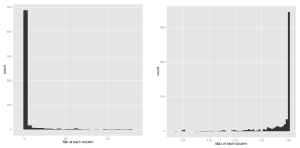TLDR: I “liberated” my Fitbit activity data and built a prototype for personalized step predictions with an eye on helping to keep me on target through the day. Check the money plot here.
I’m a huge fan of wearable tech, but a total cheapskate. Knowing that I’d been eyeing an activity tracker for a while, but that I wasn’t likely to get one on my own, my lovely wife gifted me with a Fitbit Flex for Christmas. I’ve loved having this little guy on my wrist, the phone app is slick, the web-page is full of cool looking dynamic plots, and checking the numbers to see them go up throughout the day is a total trip. One thing I found lacking though, was the daily reminder of my step count deficit. “Just 2000 steps left to go today!” is not super helpful at 11 PM. Wouldn’t it be cool if instead it kept a running prediction of your count, so you can see not just how many steps you’ve performed today, but if you’re actually on track to hitting your target?… “Well, hey… I can totally do that! Let’s make this happen!” I said to myself.
Continue reading


